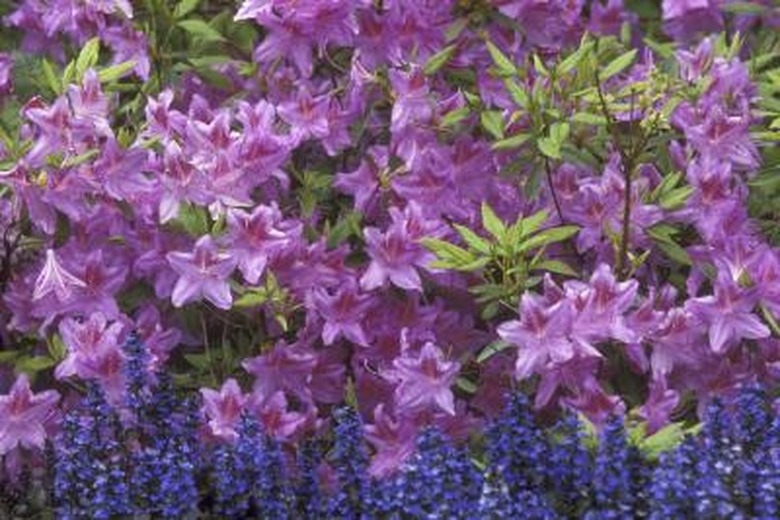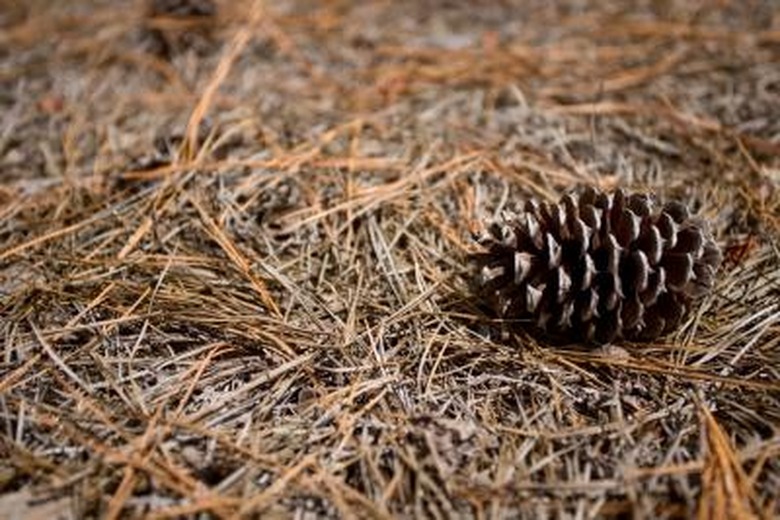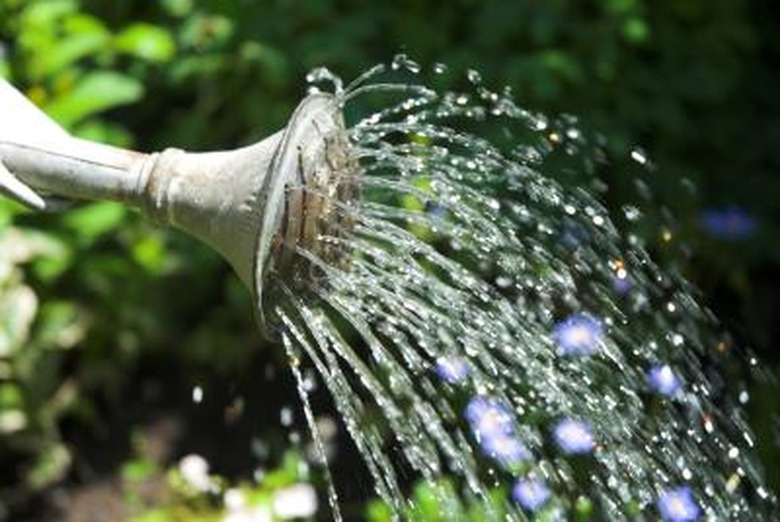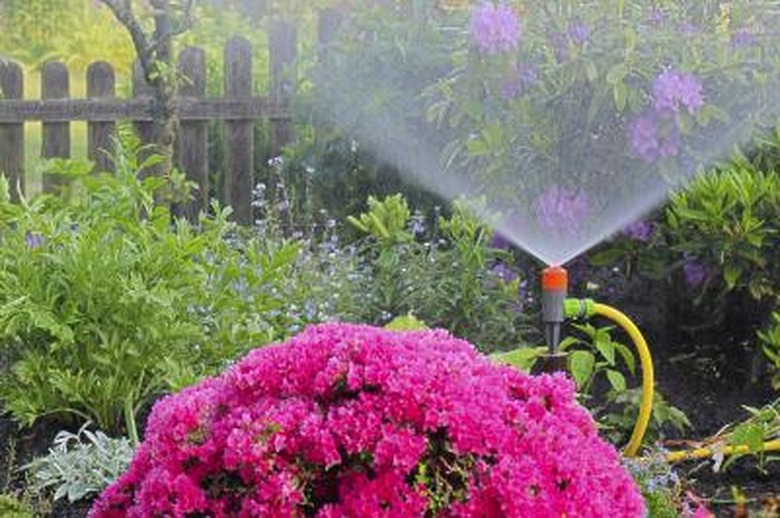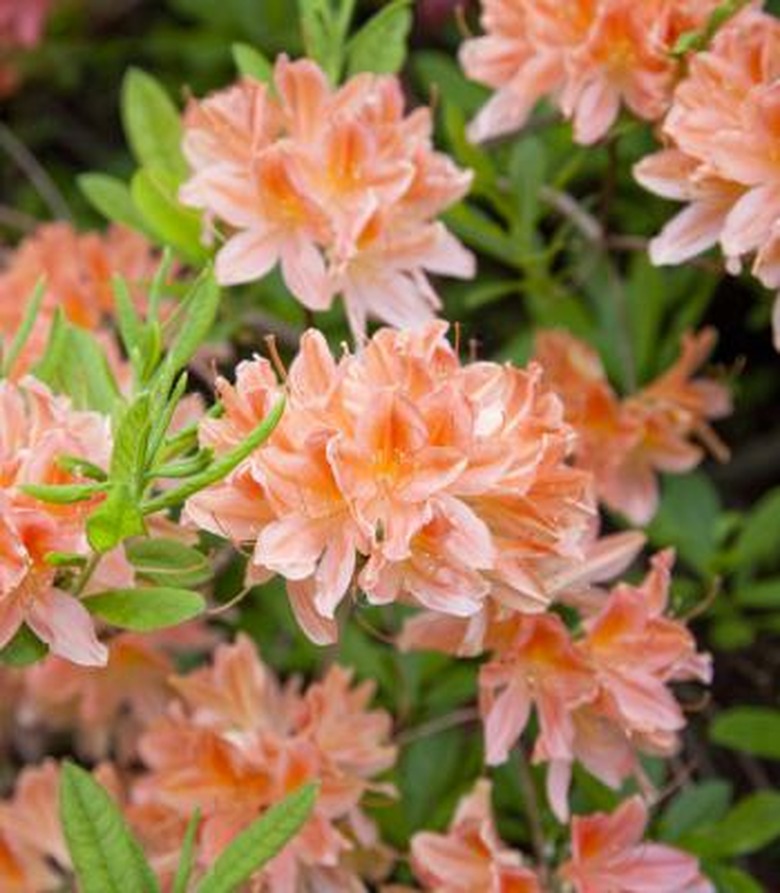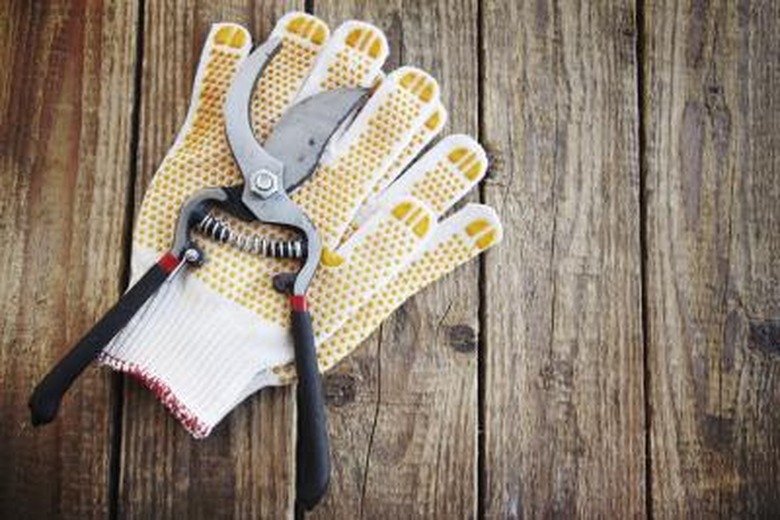How To Care For An Azalea Tree
Things Needed
- Water
- pH testing kit
- Pine straw or bark mulch
- Pruning shears
- Acid-soil fertilizer spikes
Azaleas are flowering bushes that produce bright fuchsia to electric violet blooms. These blooms appear all over the bush, so azaleas-outdoors.html)-outdoors.html) can stand alone as decorative plants. Several azalea bushes planted together make attractive undergrowth for wooded areas, especially areas containing evergreens. Azaleas, like evergreens, are acid-loving plants and will do very well under pines. They need watering only during droughts and almost no fertilization. They are also perennials, coming alive and blooming with bright flowers year after year.
Step 1
Sprinkle about 1/2-inch of pine straw or pine bark mulch around the base of the azalea. Mulch once after the ground thaws in the spring and once a month after that. Pack 1-inch of mulch around the plant in mid October before the first frost. Do not mulch in the winter.
Step 2
Water the azalea after mulching until the soil is damp but not soaked. Water again only when the top layer of soil is completely dry. The water will help carry nutrients from the mulch into the soil. Only water the azalea twice after mulching.
Step 3
Water the azalea regularly during a drought. Water the azalea deeply, as above and wait until the topsoil is dry before watering it again. Continue to water your azalea this way throughout the drought.
Step 4
Fertilize the azalea, if desired, once every two months of the growing season. Use one acid-soil fertilizer spike per plant. Drive the spike into the ground about a foot away from the azalea's base. This will ensure the fertilizer reaches more fine root tips.
Step 5
Prune back long offshoots in the fall after the azalea is done blooming. Pruning after bloom will avoid damaging the plant, while pruning offshoots will produce more blooms from new growth in the spring. It also helps maintain shape and prevents the azalea from interfering with other plants.
Tip
Fertilizer is only necessary if your soil is alkaline. Test the soil with a pH testing kit; the soil should be 5.5 to 6.5. Soil higher than 6.5 will need acid-soil fertilizer. If the azalea is growing under pines or other evergreens, mulch is unnecessary. A layer of mulch or pine needles from existing pines will add nutrients to the soil that acid-loving plants need.
